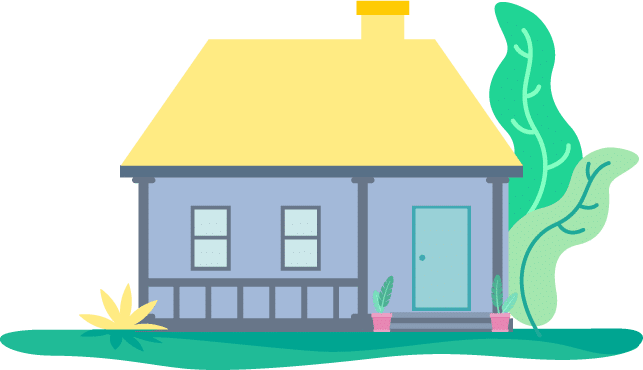
In an upcoming webinar, we’ll discuss how schools are staying prepared for whatever comes this fall with the help of Kiddom and Open Up Resources. Below we explore some of the topics we’ll address in our discussion. You can join us (Wed, July 15 at 3P EST) by registering here.
After the vast inequities caused by COVID-19 school closures this spring, many schools and districts are looking to recuperate learning loss and prepare for whatever comes this fall.
While students have learned from home how to avoid contracting or spreading the novel coronavirus, the content in front of them has been changing just as rapidly. As educators face the great challenge of how to teach this fall, we are also being called, in this time of rightful anger and political protest, to re-examine what we teach students. In short, the world is changing, and school will change along with it.
While we don’t have the ability to address all of these issues in one webinar, Kiddom and Open Up Resources do see a more equitable path to bring high-quality learning to all students, and greater consistency to teachers and students, regardless of the environment this fall.
Read on to learn three key themes that we will address in next week’s webinar around how schools can stay prepared for the fall semester. We invite you to join the discussion by registering here, and be sure to check out the entire summer series of webinars on distance learning here.

Vivi Hyacinthe
Marketing Specialist
A lifelong learner, primarily through storytelling.
How to Prepare for In-Class, Blended, or Distance Learning | Join Our Upcoming Webinar
1) Try to Accommodate Your Community
It’s difficult for school districts to plan for flexibility without knowing how each possibility will affect their families and staff. Gather input from key stakeholders in every direction before cementing plans for the fall semester.
Remember that school once doubled as childcare, too, and it’s hard to predict which parents will be called back to work and when. Talk to parents in your community to understand the missing pieces of at-home learning. From staff, districts can learn which distance learning practices worked best for the spring and summer, and which to leave behind in the new school year.
Students who engage in improvement processes can take ownership of their schools’ success, too. Keanna Warren, principal at Purdue Polytechnic High School in Indiana, says that a survey of her students revealed that they really missed social interactions with their friends. This inspired PPHS to institute virtual versions of their clubs and project-based learning outlets. When the school reopens, it will do so with valuable insight into which programs are resonating with students.
2) Redesign School As We Know It
Many cities have released their own phased plans to reopen, and schools have had to quickly adapt to match their pace. Some changes include splitting students into two groups and having them each return for two separate days a week.
Several states, including Mississippi, have released guidance on making contact tracing less difficult. One way to do so is to have students stay in one classroom throughout the day and have teachers move around instead.
Another way schools are being reinvented is through the academic year calendar. Learning loss and the “COVID slide” are key motivators in the argument for a year-round school calendar. Studies show that students in grades 3-8 have fallen a third of a year behind in reading and half a year or more behind in math. Summer programs may become more and more common as we buckle down for the journey to a vaccine or a cure.
What Free Resources Come With This Distance Learning Bundle?

1. Kiddom and Open Up Resources co-authored this No-Nonsense Guide to Distance Learning to help learning communities ensure continuity and quality through engaging remote learning experiences.
2. We are also partnering to host a Distance Learning Webinar Series. Sign up for upcoming webinars here.

Blended learning has emerged as a viable and desirable option for K-12 education to continue this fall. Some districts, such as New Orleans Public Schools, are preparing for business as usual for grades K-4—if business as usual included masks and frequent hand washing—and a hybrid model of virtual and in-person learning in the upper grades.

On the days when students are not expected to be at school physically, learning will definitely include a self-paced, digital component. Schools can prepare for this by finding out which blended learning model best fits their community and stay ready for every possibility by using Kiddom + Open Up Resources digital curriculum, which we will cover in detail in next week’s webinar.
3) Innovate Teaching and Learning
One of the greatest challenges that has arisen from virtual learning is the inability to connect with students in person. Asynchronous instruction gives teachers more flexibility and students more autonomy as they work through a unit at their own pace.
Using Kiddom, teachers can attach instructional materials or original content to any assignment. Videos, for example, can help address the subject matter and recreate the feel of live instruction. Students can then view the materials as much or as little as needed before attempting the assignment.
Another way to adapt instruction for a virtual environment is by using digital curriculum. Because it is editable and built with meticulous supports, digital curricula within Kiddom increases equity in the classroom by accommodating students’ needs. Teachers can personalize assignments by attaching resources from Kiddom’s Content Library, which connects teachers to over 70,000 resources from providers like CK-12, iXL, Newsela, PBS Learning Media, and more.
Authored by Open Up Resources, math curricula for grades 6-8 are available for free in the Kiddom platform from now until August 1. Again, you can join our webinar on July 15 to learn more about how to prepare for the fall using Kiddom and OUR. View the full summer series of webinars on distance learning here. Educators who attend two or more webinars will receive a certificate of PD completion. We look forward to seeing you there!
Kiddom seamlessly connects the most critical aspects of teaching and learning on one platform.
For the first time, educators can share and manage digital curriculum, differentiate instruction, and assess student work in one place. Learners can take assessments online, see student performance data with the click of a button, and teachers have the insight and tools they need to create individual learning paths.
Are you thinking about bringing digital curriculum to your school or district?
Connect with us in a 15-minute meeting to learn more about available pre-packaged curriculum, and how the Kiddom education platform can support your learning community.